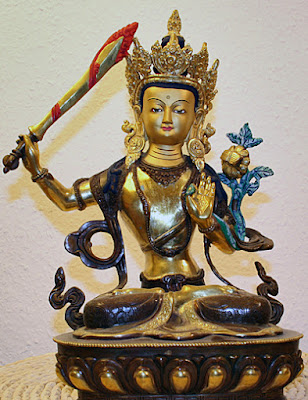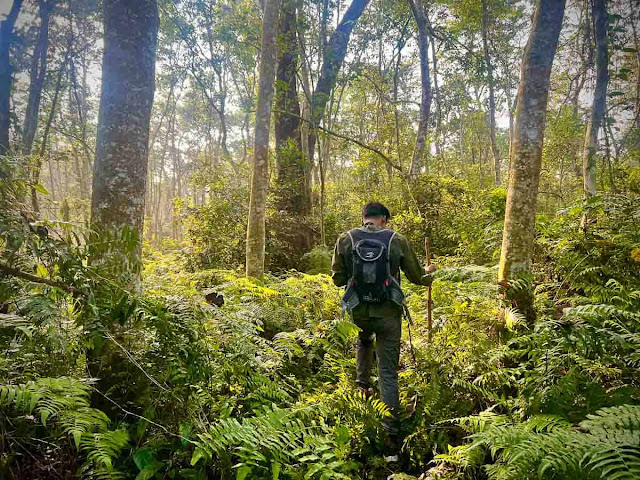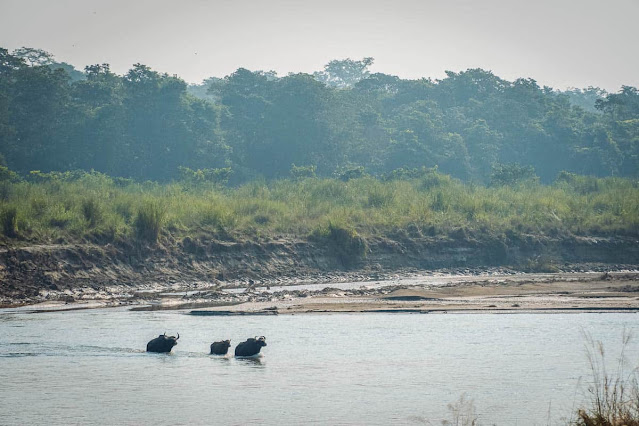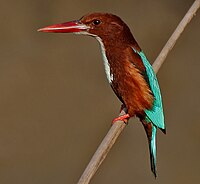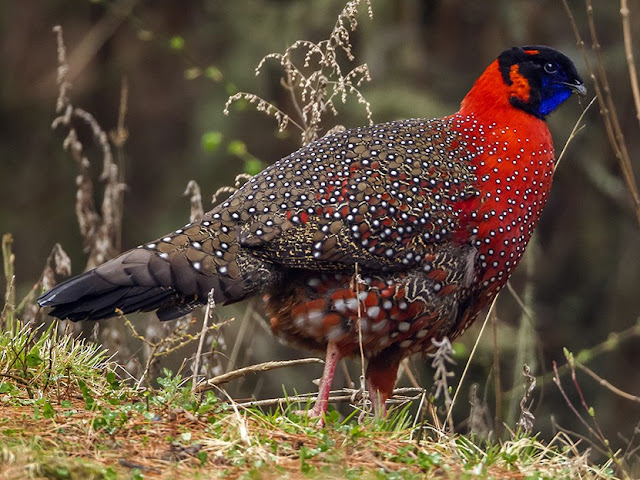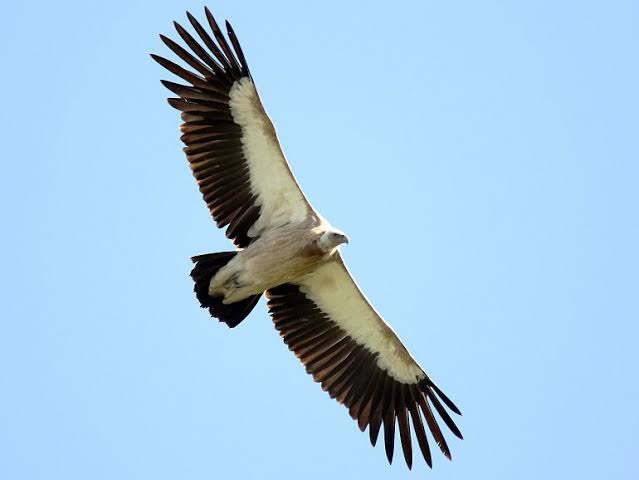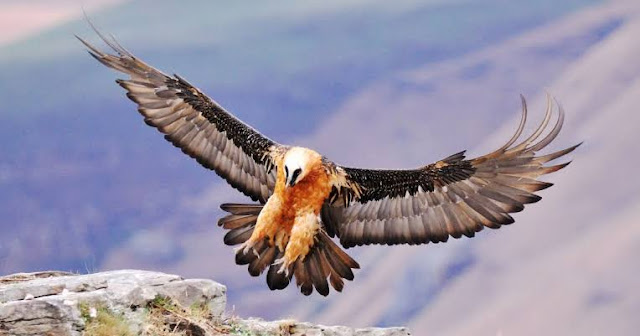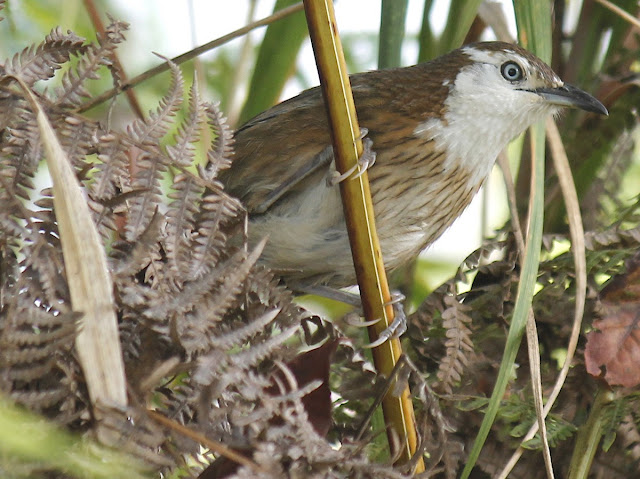11 - 19th November 2023
Day 1 Arrival Kathmandu
Arrive at Kathmandu airport by Thai Airway, meet and assist, transfer to your hotel .The rest of the day is free for you to relax in the city of the Himalayan or visit Swoyambhu. Overnight stay at Kathmandu.
เดินทางถึงสนามบินกาฐมาณฑุโดยสายการบินไทย พบปะไกด์เนปาลและเดินทางไปยังโรงแรมเวลาส่วนที่เหลือของวันมีอิสระให้พักผ่อนตามสบายในเมืองหิมาลัยหรือเยี่ยมชมสโวยัมภู พักค้างคืนที่กาฐมาณฑุ
Where is Napal?
พรมแดนจะไม่ติดกับบังกลาเทศ โดยถูกกั้นด้วยทางเดินซิลิกูริ ในรัฐเบงกอลตะวันตก (The Siliguri Corridor, also known as the Chicken's Neck, is a stretch of land around the city of Siliguri in West Bengal, India.[1][2] 20–22 kilometres (12–14 mi) at the narrowest section, this geo-political and geo-economical corridor connects the eight states of northeast India to the rest of the Indian Republic.[1] The countries of Nepal and Bangladeshlie on each side of the corridor and the Kingdom of Bhutan lies at the northern end of the corridor. The Kingdom of Sikkim formerly lay on the northern side of the corridor, until its merging with India in 1975. )และจากภูฏานโดยรัฐสิกขิมของอินเดีย เนปาลมีภูมิประเทศที่หลากหลาย รวมถึงที่ราบอันอุดมสมบูรณ์ เนินเขาที่ปกคลุมด้วยป่าใต้เทือกเขาอัลไพน์ และภูเขาที่สูงที่สุดในโลก 8 ลูกจากทั้งหมด 10 ลูก รวมถึงยอดเขาเอเวอเรสต์ ซึ่งเป็นจุดที่สูงที่สุดในโลก กาฐมา ณ ฑุเป็นเมืองหลวงของประเทศและเป็นเมืองที่ใหญ่ที่สุด เนปาลเป็นรัฐที่มีหลายเชื้อชาติ หลายภาษา หลายศาสนา และหลากหลายวัฒนธรรม โดยมีภาษาเนปาลเป็นภาษาราชการ
ชื่อ "เนปาล" ได้รับการบันทึกครั้งแรกในตำราตั้งแต่สมัยเวทของอนุทวีปอินเดีย ซึ่งเป็นยุคในเนปาลโบราณที่ศาสนาฮินดูก่อตั้งขึ้น ซึ่งเป็นศาสนาหลักของประเทศ ในช่วงกลางสหัสวรรษแรกก่อนคริสต์ศักราช พระพุทธเจ้าองค์ผู้ก่อตั้งพระพุทธศาสนาประสูติที่ลุมพินีทางตอนใต้ของเนปาล
 |
| ภาพนี้ดูคุ้นตาเคยพบเห็นตามผนังโบสถ์วิหารในประเทศไทยหลายที่ |
Kathmandu
Kathmandu, officially Kathmandu Metropolitan City is the capital and most populous city of Nepal with 845,767 inhabitants living in 105,649 households in 2021 and 2.9 million people in its urban agglomeration. It is located in the Kathmandu Valley, a large valley in the high plateaus in central Nepal, at an altitude of 1,400 metres (4,600 feet).
 |
| Kathmandu Durbar Square, 1852 |
The city is one of the oldest continuously inhabited places in the world, founded in the 2nd century AD. The valley was historically called the "Nepal Mandala" and has been the home of the Newar people, a cosmopolitan urban civilization in the Himalayan foothills. The city was the royal capital of the Kingdom of Nepaland hosts palaces, mansions and gardens built by the Nepali aristocracy. It has been home to the headquarters of the South Asian Association for Regional Cooperation (SAARC) since 1985. Today, it is the seat of government of the Federal Democratic Republic of Nepal, established in 2008, and is part of Bagmati Province.
Kathmandu is and has been for many years the centre of Nepal's history, art, culture, and economy. It has a multi-ethnic population within a Hindu and Buddhist majority. Religious and cultural festivities form a major part of the lives of people residing in Kathmandu. Tourism is an important part of the economy in the city. In 2013, Kathmandu was ranked third among the top ten upcoming travel destinations in the world by TripAdvisor, and ranked first in Asia. The city is considered the gateway to the Nepal Himalayas and is home to several World Heritage Sites: the Durbar Square, Swayambhu Mahachaitya, Bouddha and Pashupatinath. Kathmandu valley is growing at 4 percent per year according to the World Bank in 2010, making it one of the fastest-growing metropolitan areas in South Asia, and the first region in Nepal to face the unprecedented challenges of rapid urbanization and modernization at a metropolitan scale.[4] It is the largest metropolitan area located in the Himalayas.
 |
| Clockwise from top: Kathmandu Skyline,Ghantaghar, Dharahara,Pashupatinath Temple,Kamal Pokhari,Rani Pokhari पशुपतिनाथ मन्दिर Pashupatinath Temple UNSECO World Heritage Site NEPAL🇳🇵วัดปศุปฏินาถ : ดินแดนศักดิ์สิทธิ์แห่งองค์ศิวะเทพของชาวเนปาล |
กาฐมาณฑุเมืองนี้เป็นหนึ่งในสถานที่ที่มีผู้คน
อาศัยอยู่อย่างต่อเนื่องที่เก่าแก่ที่สุดในโลก ก่อตั้งขึ้นในศตวรรษที่ 2 หุบเขานี้เคยถูกเรียกว่า "เนปาล มันดาลา" และเป็นที่อยู่ของชาวเนวาร์ อารยธรรมเมืองที่มีความเป็นสากลบนเชิงเขาหิมาลัย เมืองนี้เคยเป็นเมืองหลวงของราชอาณาจักร
เนปาลและเป็นที่ตั้งของพระราชวัง คฤหาสน์ และสวนที่สร้างโดยขุนนางชาวเนปาล เป็นที่ตั้งของสำนักงานใหญ่ของสมาคมเอเชียใต้เพื่อความร่วมมือระดับภูมิภาค (SAARC) ตั้งแต่ปี 2528 ปัจจุบันเป็นที่ตั้งของรัฐบาลแห่งสหพันธ์สาธารณรัฐประชาธิปไตยเนปาล ก่อตั้งขึ้นในปี 2551 และเป็นส่วนหนึ่งของจังหวัดบักมาตี
Manjushree, with Chandrahrasa, the Buddhist deity said to have created the valley said to have created the valley
กาฐมาณฑุเป็นศูนย์กลางของประวัติศาสตร์ ศิลปะ วัฒนธรรม และเศรษฐกิจของเนปาลมานานหลายปี มีประชากรหลายเชื้อชาติโดยส่วนใหญ่เป็นชาวฮินดูและชาวพุทธ เทศกาลทางศาสนาและวัฒนธรรมเป็นส่วนสำคัญของชีวิตผู้คนที่อาศัยอยู่ในกาฐมาณฑุ การท่องเที่ยวเป็นส่วนสำคัญของเศรษฐกิจในเมือง ในปี พ.ศ. 2556 กาฐมาณฑุได้รับการจัดอันดับให้เป็นที่สามในสิบอันดับแรกของสถานที่ท่องเที่ยวที่กำลังจะมีขึ้นในโลกโดย TripAdvisor และเป็นอันดับที่หนึ่งในเอเชีย เมืองนี้ถือเป็นประตูสู่เทือกเขาหิมาลัยของเนปาล และเป็นที่ตั้งของแหล่งมรดกโลกหลายแห่ง ได้แก่ จัตุรัสดูร์บาร์ สวยัมภูมหาชัยทยา พุทธะ และปศุปฏินาถ หุบเขากาฐมาณฑุเติบโตร้อยละ 4 ต่อปีตามข้อมูลของธนาคารโลกในปี 2553 ทำให้เป็นหนึ่งในเขตเมืองใหญ่ที่เติบโตเร็วที่สุดในเอเชียใต้ และเป็นภูมิภาคแรกในเนปาลที่เผชิญกับความท้าทายที่ไม่เคยเกิดขึ้นมาก่อนจากการขยายตัวของเมืองอย่างรวดเร็วและความทันสมัยในมหานคร สเกล. เป็นเขตมหานครที่ใหญ่ที่สุดที่ตั้งอยู่ในเทือกเขาหิมาลัย.
 |
| เจดีย์โพธินาถ |
Swayambhu (Devanagari: स्वयम्भू स्तूप; Nepal bhasa: स्वयंभू; sometimes Swayambu or Swoyambhu) is an ancient religious complex atop a hill in the Kathmandu Valley, west of Kathmandu city. The Tibetan name for the site means 'Sublime Trees' (Wylie: Phags.pa Shing.kun), for the many varieties of trees found on the hill. However, Shingun may be of in Nepalbhasa name for the complex, Swayambhu, meaning 'self-sprung'. For the Buddhist Newars, in whose mythological history and origin myth as well as day-to-day religious practice Swayambhu occupies a central position, it is probably the most sacred among Buddhist pilgrimage sites. For Tibetans and followers of Tibetan Buddhism
สยัมภู (เทวนาครี: स्वयम्भू स्तूप;ภาษาเนปาล bhasa: स्वयंभू; บางครั้งเรียกสยัมบูหรือสโวยัมภู) เป็นศาสนสถานโบราณบนยอดเขาในหุบเขากาฐมาณฑุ ทางตะวันตกของเมืองกาฐมาณฑุ ชื่อภาษาทิเบตสำหรับสถานที่นี้หมายถึง 'ต้นไม้ประเสริฐ' (ไวลี: Phags.pa Shing.kun) สำหรับต้นไม้หลากหลายชนิดที่พบบนเนินเขาที่นี่ อย่างไรก็ตาม Shingun อาจมีชื่อในภาษาเนปาลว่า Swayambhu ซึ่งแปลว่า 'ผุดขึ้นมาเอง'สำหรับชาวนิววาร์ชาวพุทธ ซึ่งมีประวัติศาสตร์ทางตำนานและตำนานต้นกำเนิด ตลอดจนการปฏิบัติทางศาสนาในชีวิตประจำวัน สวนสยัมภูเป็นศูนย์กลาง ซึ่งสถานที่นี้น่าจะศักดิ์สิทธิ์ที่สุดในบรรดาสถานที่แสวงบุญของชาวพุทธ สำหรับชาวทิเบตและสาวกของศาสนาพุทธในทิเบต
 |
| Beautiful night view of Katmandu |
Day 2 Drive to Chitwan
Drive 165 kms from Kathmandu to Chitawon National Park about 5- 5.30 hrs and arrive at Chitawon and transfer to a hotel. And after arrival welcome drinks and a short briefing about Chitawon National Park, Lunch will be provided. A guide will take a jungle walk and back to the Hotel and dinner will be provided between 7 PM to 9 PM.
ขับรถไปจิตวัน
ขับรถ 165 กม. จากกาฐมาณฑุไปยังอุทยานแห่งชาติ Chitawon ประมาณ 5- 5.30 ชั่วโมง ถึง Chitawon และเข้า check in โรงแรม รับเครื่องดื่มต้อนรับและการบรรยายสรุปสั้น ๆ เกี่ยวกับอุทยานแห่งชาติ Chitawon และรับประทานอาหารกลางวัน หลังจากนั้นไกด์จะพาไปเดินป่าและกลับมาที่โรงแรม และจะมีการรับประทานอาหารเย็นระหว่างเวลา 19:00 น. - 21:00 น. |
| Narayangarh city view from Maula Kalikatemple Gaindakot |
Chitwan District's administrative center is Bharatpur, the largest city of Nepal after Kathmandu, the commercial and service center of South Central Nepal and a major destination for higher education, health care, and transportation in the region.
Chitwan lies in the Terai region of Nepal. It is in the drainage basin of the Gandaki River and is roughly triangular, taking that river as its meandering northwestern border, and a modest watershed border, with India, as the basis of its southern limit.
จิตวันอยู่ในเขตเทไรของเนปาล อยู่ในแอ่งรับน้ำของแม่น้ำ Gandaki และเป็นรูปสามเหลี่ยมโดยประมาณ แม่น้ำสายนี้เป็นพรมแดนทางตะวันตกเฉียงเหนือที่คดเคี้ยว และเป็นแนวสันปันน้ำเล็กๆ ระหว่างเนปาลกับอินเดีย
Chitwan National Park is the first national park of Nepal. It was established in 1973 as the Royal Chitwan National Park and was granted the status of a World Heritage Site in 1984.It covers an area of 952.63 km2 (367.81 sq mi) in the subtropical Inner Terai lowlands of south-central Nepal in Nawalpur, Chitwan, Makwanpur and Parsa Districts. It ranges in elevation from about 100 m (330 ft) in the river valleys to 815 m (2,674 ft) in the Sivalik Hills..
อุทยานแห่งชาติจิตวันเป็นอุทยานแห่งชาติแห่งแรกของประเทศเนปาล ก่อตั้งขึ้นเมื่อปี พ.ศ. 2516 ในฐานะอุทยานแห่งชาติ Royal Chitwan และได้รับสถานะเป็นมรดกโลกในปี พ.ศ. 2527 ครอบคลุมพื้นที่ 952.63 ตารางกิโลเมตร (367.81 ตารางไมล์) ในที่ราบลุ่มเขตอินเนอร์เทอรายกึ่งเขตร้อนทางตอนใต้ตอนกลางของประเทศเนปาล ในเขต Nawalpur, Chitwan, Makwanpur และ Parsa มีระดับความสูงตั้งแต่ประมาณ 100 ม. (330 ฟุต) ในหุบเขาแม่น้ำไปจนถึง 815 ม. (2,674 ฟุต) ในเขาศิวาลิก
Fauna


The wide range of vegetation types in the Chitwan National Park is haunt of more than 700 species of wildlife and a not yet fully surveyed number of butterfly, moth and insect species. Apart from king cobra and rock python, 17 other species of snakes, starred tortoise and monitor lizards occur. The Narayani-Rapti river system, their small tributaries and myriads of oxbow lakes is habitat for 113 recorded species of fish and mugger crocodiles. In the early 1950s, about 235 gharialsoccurred in the Narayani River. The population has dramatically declined to only 38 wild gharials in 2003. Every year gharial eggs are collected along the rivers to be hatched in the breeding center of the Gharial Conservation Project, where animals are reared to an age of 6–9 years. Every year young gharials are reintroduced into the Narayani-Rapti river system, of which sadly only very few survive.[11]
Day 3 Chitawon National Park

7:30 AM Breakfast will be served. After that we will take you canoeing on the Raapti River where you can see the full scale of nature's beauty including a host of birds, Crocodiles and other animals. And back to the Hotel for lunch and after that we will take you for Elephant riding to explore the Jungle. You can see many different animals and also on this ride you may get an opportunity to have a look at Rhinoceroses, Deers, if you are lucky may have the opportunity to see Royal Bengal Tiger. And back to the hotel and evening Tharu native folk dance show and at the end dinner will be served.
05.30 น. จะมีการเสิร์ฟชาบนเตียง หลังจากนั้นไกด์จะพาเราไปชมนกในป่า ซึ่งมีนกมากกว่า 400 สายพันธุ์ ซึ่งเราสามารถเห็นนกหลากหลายสายพันธุ์ได้
07.30 น. รับประทานอาหารเช้า หลังจากนั้นจะไปพายเรือแคนูในแม่น้ำ Raapti ซึ่งเราจะได้เห็นความงามของธรรมชาติอย่างเต็มรูปแบบรวมถึงนก จระเข้ และสัตว์อื่น ๆ และกลับโรงแรมเพื่อรับประทานอาหารกลางวัน หลังจากนั้นเราจะพาไปขี่ช้างสำรวจป่า คุณสามารถเห็นสัตว์ต่างๆ มากมาย และในช่วงเวลานี้เราอาจมีโอกาสได้ชมแรด กวาง หากโชคดีอาจมีโอกาสได้เห็นเสือโคร่งเบงกอล และกลับถึงโรงแรมและช่วงเย็นมีการแสดงฟ้อนรำพื้นเมืองของชาวธรุและรับประทานอาหารเย็น ณ สิ้นสุด
Mammals
Chitwan National Park is home to 68 mammal species.The "king of the jungle" is the Bengal tiger. The alluvial floodplain habitat of the Terai is one of the best tiger habitats anywhere in the world. Since the establishment of Chitwan National Park the initially small population of about 25 individuals increased to 70–110 in 1980. In some years this population has declined due to poaching and floods. In a long-term study carried out from 1995 to 2002 tiger researchers identified a relative abundance of 82 breeding tigers and a density of 6 females per 100 km2 (39 sq mi). Information obtained from camera traps in 2010 and 2011 indicated that tiger density ranged between 4.44 and 6.35 individuals per 100 km2 (39 sq mi). They offset their temporal activity patterns to be much less active during the day when human activity peaked.
Indian leopards are most prevalent on the peripheries of the park. They co-exist with tigers, but being socially subordinate are not common in prime tiger habitat.[15] In 1988, a clouded leopard (Neofelis nebulosa) was captured and radio-collared outside the protected area. It was released into the park, but did not stay there.[16]
Chitwan is considered to have the highest population density of sloth bears with an estimated 200 to 250 individuals. Smooth-coated otters inhabit the numerous creeks and rivulets. Bengal foxes, spotted linsangs and honey badgers roam the jungle for prey. Striped hyenas prevail on the southern slopes of the Churia Hills.During a camera trapping survey in 2011, dholes were recorded in the southern and western parts of the park, as well as Indian jackals, fishing cats, jungle cats, leopard cats, crab-eating mongooses, yellow-throated martens, large, small Indian and Asian palm civets.
Indian rhinoceros: since 1973 the population has recovered well and increased to 544 animals around the turn of the century. To ensure the survival of the endangered species in case of epidemics animals are translocated annually from Chitwan to the Bardia National Park and the Shuklaphanta National Park since 1986. However, the population has repeatedly been jeopardized by poaching: in 2002 alone, poachers killed 37 individuals in order to saw off and sell their valuable horns.[7] Chitwan has the largest population of Indian rhinoceros in Nepal, estimated at 605 of 645 individuals in total in the country as of 2015.[19] Gaurs spend most of the year in the less accessible Churia Hills in the south of the national park. But when the bush fires ease off in springtime and lush grasses start growing up again, they descend into the grassland and riverine forests to graze and browse. The Chitwan population of the world's largest wild cattle species has increased from 188 to 368 animals in the years 1997 to 2016. Furthermore, 112 animals were counted in the adjacent Parsa Wildlife Reserve. The animals move freely between these parks. Apart from numerous wild boars, there are also herds of chital, sambar, red muntjac and Indian hog deer that inhabits the park. Choushingas reside predominantly in the hills. Rhesus macaques, gray langurs, thick-tailed pangolins, Indian crested porcupines, several species of flying squirrels, black-naped hares and endangered hispid hares are also present.
CANOE RIDE IN CHITWAN NATIONAL PARK
If you came to Chitwan to relax, the canoe ride is a good way to do so. Also after a few days in the wild, this is great chance to become calm again.
With a canoe you will slowly pass the shores of the rivers which are full with amazing crocodiles and beautiful birds. During the trip you are accompanied by a guide who will tell you about the animals. Off course you don’t have to peddle yourself as a boatman joins the ride
Birds
Every year dedicated bird watchers and conservationists survey bird species occurring all over the country. In 2006 they recorded 543 species in the Chitwan National Park, much more than in any other protected area in Nepal and about two-thirds of Nepal's globally threatened species. Additionally, 20 black-chinned yuhina,
 |
| black-chinned yuhina, |
a pair of Gould's sunbird, a pair of blossom-headed parakeet and one slaty-breasted rail, an uncommon winter visitor, were sighted in spring 2008.
Especially the park's alluvial grasslands are important habitats for the critically endangered Bengal florican,
Bengal Florican
Houbaropsis bengalensis
the vulnerable lesser adjutant, grey-crowned prinia, swamp francolin and several species of grass warblers. In 2005 more than 200 slender-billed babblers were sighted in three different grassland types.The near threatened Oriental darter is a resident breeder around the many lakes, where egrets, bitterns, storks and kingfishers also abound. The park is one of the few known breeding sites of the globally threatened spotted eagle. Peafowl and jungle fowl scratch their living on the forest floor.
Swamp FrancolinOrtygornis gularis
Apart from the resident birds about 160 migrating and vagrant species arrive in Chitwan in autumn from northern latitudes to spend the winter here, among them the greater spotted eagle, eastern imperial eagle and Pallas's fish-eagle. Common sightings include brahminy ducks and goosanders. Large flocks of bar-headed geese just rest for a few days in February on their way north.
 |
| slender-billed babblers |
As soon as the winter visitors have left in spring, the summer visitors arrive from southern latitudes. The calls of cuckoos herald the start of spring. The colourful pitta and several sunbird species are common breeding visitors during monsoon. Among the many flycatcher species the Indian paradise flycatcher with his long undulating tail in flight is a spectacular sight.
Elephant Safari in Chitwan- Discovering Wild Rhino
. Elephant Back Safari is one of the great ways to explore the Chitwan National Park to see wildlife. Chitwan National Park is the home of Royal Bengal Tiger, One horn Rhino, Leopard, Deers, Sloth Bear, Spotted deers, and more. You will be encountered with one of these wild animals during your ride in the jungle.
Chitwan Elephant Safari lasts for 1 hour inside the Jungle. There is a rule of mandatory 4 people in one elephant during the safari. The size of people and the groups are always taken care of so that you won’t be feeling uneasy during this trip.
 |
| Tharu native folk dance show and at the end dinner will be served. |
Day 4 Nawalparasi Vulture Restaurant feeding center
will serve around and after that guide will take you for Tharu village visit, they are the primitive ethnic group reside of the plane and back to the Hotel and breakfast will be serve and after that departure to Nawalparasi vulture Restaurant feeding center then to Pokhara and continue to Lumle and then hike to Australian camp, for Raptor watch, overnight at Australian camp Lodge ศูนย์ให้อาหารนกแร้ง Nawalparasi
05.30 น. บริการชาบนเตียง และหลังจากนั้นไกด์จะพาเราไปเยี่ยมชมหมู่บ้าน Tharu พวกเขาเป็นกลุ่มชาติพันธุ์ดึกดำบรรพ์ที่ใช้ชีวิตสันโดษและตัดขาดจากโลกภายนอก หลังจานนั้นเราก็กลับไปที่โรงแรม และจะมีบริการอาหารเช้า และหลังจากนั้นออกเดินทางไปยังภัตตาคารนกแร้ง Nawalparasi เพื่อชมการให้อาหารแร้ง ต่อจากนั้นก็มุ่งหน้าสู่เมืองโปขระ และเดินทางต่อไปยังลุมเล จากนั้นเดินป่าไปยังแคมป์ของออสเตรเลีย เพื่อชม Raptor ค้างคืนที่ Australian Camp LodgeAbout the Tharu The Tharu are an ethnic group indigenous to the Terai region of Nepal which includes Chitwan. Nearly 7% of Nepal's population are Tharu. Genuine Tharu village in Chitwan The Tharu in Chitwan have lived there for hundreds of years and call themselves "The People of the Forest". They farm rice, corn lentil and hunt wild boar, deer rabbit along with river fish. Unlike a lot of the Nepal's population the Tharu are not known to seek employment overseas. Thusly the Tharu have brought up a unique culture and way of life unlike other tribes in Nepal.
Vulture Conservation and the Vulture Restaurant
Nepal is undertaking a unique conservation effort to save vultures that have been nearly eradicated in most of South Asia over the past few decades. Multiple vulture restaurants throughout Nepal have been established to contribute to their conservation.
As an oblivious reader, you might imagine these restaurants as a place where you can go to have lunch or dinner and view packs of vultures in the surrounding area. That was what I thought when I first heard about Vulture restaurant. In addition, some might even think that these places serve vulture meat, which would be horrible, but they do not.
In reality, it is actually a restaurant for endangered vultures, similar to a conservation sanctuary. It provides them with safe food so that they will not starve to death or die due to drug poisoning. These restaurants consist of a big area that’s like a jungle. Vulture Restaurants are a unique concept among conservation communities; they are managed by the community and are called Jatayu Restaurants. Furthermore, there has been increased tourism tied to the Popularity of these restaurants Restaurants both locally and internationally.
การอนุรักษ์นกแร้งและร้านอาหารนกแร้งเนปาลกำลังดำเนินการอนุรักษ์ที่ไม่เหมือนใครเพื่อช่วยชีวิตนกแร้งที่เกือบจะถูกกำจัดให้หมดไปในเอเชียใต้ในช่วงสองสามทศวรรษที่ผ่านมา มีการจัดตั้งร้านอาหารอีแร้งหลายแห่งทั่วเนปาลเพื่อช่วยอนุรักษ์พวกมันในฐานะผู้อ่านที่หลงลืม คุณอาจจินตนาการว่าร้านอาหารเหล่านี้เป็นสถานที่ที่คุณสามารถไปรับประทานอาหารกลางวันหรืออาหารเย็นและชมฝูงนกแร้งในบริเวณโดยรอบ นั่นคือสิ่งที่ฉันคิดเมื่อได้ยินเกี่ยวกับร้านอาหารอีแร้งเป็นครั้งแรก นอกจากนี้ บางคนอาจคิดว่าสถานที่เหล่านี้เสิร์ฟเนื้อนกแร้ง ซึ่งคงจะน่ากลัว แต่ก็ไม่เป็นเช่นนั้น
ในความเป็นจริงมันเป็นร้านอาหารสำหรับนกแร้งที่ใกล้สูญพันธุ์ คล้ายกับเขตอนุรักษ์ มันให้อาหารที่ปลอดภัยแก่พวกเขาเพื่อที่พวกเขาจะได้ไม่อดตายหรือตายเพราะพิษของยา ร้านอาหารเหล่านี้ประกอบด้วยพื้นที่ขนาดใหญ่ที่เหมือนป่า ร้านอาหารอีแร้งเป็นแนวคิดที่ไม่เหมือนใครในชุมชนอนุรักษ์ บริหารงานโดยชุมชน เรียกว่า ภัตตาคารจาตายุ นอกจากนี้ยังมีการท่องเที่ยวที่เพิ่มขึ้นซึ่งเชื่อมโยงกับความนิยมของร้านอาหารเหล่านี้ ร้านอาหารทั้งในประเทศและต่างประเทศRestaurant in Kawasoti, Nawalparasi:
As mentioned earlier, the vulture restaurant situated in Kawasaki is the world’s first-ever community-managed center. They introduced this amazing way of conserving wild Vultures. The region around this restaurant and the greater Chitwan National Park area has been recognized by Birdlife International (IBA) as an Important and necessary Bird and Biodiversity Area.
Lumle is well known for its agricultural centre on a hillside above the village founded in 1968 to train British Gurkha Ex-servicemen farmers. Its role was widened in 1975 to benefit the communities from which Gurkhas were recruited in Mid-West Hills. It is now part of Nepal Agricultural Research Council.

Treat Your Porters Right When You Trek
 Australian Camp set on the beautiful hill top offers striking views over the valleys and stunning views of the Annapurna Mountain range. The place is located on the north-west of Pokhara. After driving about an hour, we start our hike from Kande. The trail is steep; through stone staircase for about 1.5 to 2 hours hours to get Australian Camp, situated on the ridge and having an incredible view of Annapurna South (7219m), Hiunchuli (6440m), Machhapuchhre (6993m) and Lamjung Himal.
Australian Camp set on the beautiful hill top offers striking views over the valleys and stunning views of the Annapurna Mountain range. The place is located on the north-west of Pokhara. After driving about an hour, we start our hike from Kande. The trail is steep; through stone staircase for about 1.5 to 2 hours hours to get Australian Camp, situated on the ridge and having an incredible view of Annapurna South (7219m), Hiunchuli (6440m), Machhapuchhre (6993m) and Lamjung Himal.Day 5 Full day Bird and Nature Watching
Full day bird and nature watching on the mountain, overnight at Australian camp Lodge
From Australian Camp we will hike down to continue through perfect jungle trail with birds chirping sounds our trek to continue to beautiful village of Dhampus, takes about an hour. Dhampus village is on the Annapurna trekking trail is blessed with majestic views of the Annapurna Himalayan Range. The village is attractive, a number of old fashioned slate roofed houses. The trek is best for those wishing to experience Nepal mountain scenery and ethnic culture within a short time.
.
จาก Australian Camp เราจะเดินเขาลงเพื่อเดินทางต่อผ่านเส้นทางป่าที่สมบูรณ์พร้อมเสียงนกร้อง การเดินป่าของเราเพื่อเดินทางต่อไปยังหมู่บ้าน Dhampus ที่สวยงาม ใช้เวลาประมาณหนึ่งชั่วโมง หมู่บ้าน Dhampus อยู่บนเส้นทางเดินป่าอันนาปุรณะซึ่งมีทัศนียภาพอันงดงามของเทือกเขาหิมาลัยอันนาปุรณะ หมู่บ้านนี้มีเสน่ห์ บ้านหลังคามุงด้วยหินชนวนแบบเก่าหลายหลัง ช่วงระยะการเดินทางนี้เหมาะสำหรับผู้ที่ต้องการสัมผัสทิวทัศน์ภูเขาของเนปาลและวัฒนธรรมชาติพันธุ์ในระยะเวลาอันสั้น
Satyr TragopanTragopan satyra
A large pheasant-like bird. Male has a black face with dark blue cheeks and chin, and a grayish-brown back and uppertail. It has white speckling all over, but the male Satyr Tragopan is the only tragopan to have white dots on the red breast. Female is similar in shape, but all brown with thin white streaks on the back and reddish-brown wings. Found in dense forests, where it forages on the forest floor. The call is a nasal, wailing “gwaaahh.”
Black-eared Shrike-Babbler
Colorful small bird with a cartoonish large-eyed appearance. Luminous yellow underparts, yellow-green upperparts, and dark rust-colored throat are present in both sexes, but female is slightly paler and not as strongly marked as the male. Overall can be very similar to Clicking and Trilling Shrike-Babblers, but lacks any reddish coloration on the forehead, has a more extensive silvery brow and nape, and is darker overall. Inhabits foothill and montane forests, where it joins mixed-species foraging flocks. Song is high-pitched, rapid, and repetitive: “tweeweeweeweeweeweewee.”
 |
Bay Woodpecker |
Darjeeling WoodpeckerDendrocopos darjellensis
 A brightly-colored and well-marked woodpecker of high-altitude Himalayan foothill forests. Similar to Great Spotted Woodpecker but with a densely-streaked yellowish belly and pale yellow-orange on the neck and throat. Males have a bright red patch on the back of the crown which females lack. Like other large black-and-white woodpeckers, usually seen singly or in pairs, drumming away on tree trunks.
A brightly-colored and well-marked woodpecker of high-altitude Himalayan foothill forests. Similar to Great Spotted Woodpecker but with a densely-streaked yellowish belly and pale yellow-orange on the neck and throat. Males have a bright red patch on the back of the crown which females lack. Like other large black-and-white woodpeckers, usually seen singly or in pairs, drumming away on tree trunks.Bonelli's EagleAquila fasciata
 Medium-sized, athletically proportioned eagle, with streaked whitish underparts contrasting with dark wings and tail. Juveniles are rufous below, and lack the adult’s broad dark band at the tip of the tail. Found in forests or mountains, sometimes in more open habitats in winter; usually in remote areas. Builds nests on cliffs and ledges, and in caves. Distinctive in flight: note bulging secondaries and narrowness of wing where it meets the body. Usually seen soaring over distant ridgelines, when the shallow “fingers” to its wings are obvious in contrast to the deep fingers of other eagles.
Medium-sized, athletically proportioned eagle, with streaked whitish underparts contrasting with dark wings and tail. Juveniles are rufous below, and lack the adult’s broad dark band at the tip of the tail. Found in forests or mountains, sometimes in more open habitats in winter; usually in remote areas. Builds nests on cliffs and ledges, and in caves. Distinctive in flight: note bulging secondaries and narrowness of wing where it meets the body. Usually seen soaring over distant ridgelines, when the shallow “fingers” to its wings are obvious in contrast to the deep fingers of other eagles.
Himalayan Griffon ( Vulture)Gyps himalayensis
 A regal raptor of steppes, valleys, and mountainous regions, this large scavenger is fairly common throughout most of its range. Adult is sandy brown with a pale, featherless head. When in flight, the bird has black primaries and a small-headed, squared-winged appearance. Usually seen singly or in small groups; gathers in large flocks at a carcass. The principal scavenger at Tibetan sky burials.
A regal raptor of steppes, valleys, and mountainous regions, this large scavenger is fairly common throughout most of its range. Adult is sandy brown with a pale, featherless head. When in flight, the bird has black primaries and a small-headed, squared-winged appearance. Usually seen singly or in small groups; gathers in large flocks at a carcass. The principal scavenger at Tibetan sky burials.Day 6 Full day Bird and Nature Watching
Full day bird and nature watching on the mountain, overnight at Australian camp Lodge
.
 |
| Himalayan Monal |
GrandalaGrandala coelicolor
Often seen swirling in flocks above mountain passes, scrubby alpine forests, and highland meadows, this large thrush is unlike any other. Adult male is a deep, almost eye-searing blue with jet-black wings. Females and immatures are brown with white streaks all over the head and underparts and weak white bars on the wings. Long-billed and sharp-winged profile, along with flocking behavior, is more reminiscent of starlings than thrushes.
Bearded VultureGypaetus barbatus
Eurasian SparrowhawkAccipiter nisus
Day 7 Pokhara
Half day bird and nature watching on the mountain. Transfer to Pokhara in the afternoon and go find Spiny Babbler, "Kande Bhyakur" endemic bird of Nepal. Overnight stay in Hotel.
ดูนกและธรรมชาติบนภูเขาครึ่งวัน เดินทางไปโปขระในช่วงบ่าย และไปหา Spiny Babbler นกประจำถิ่น "Kande Bhyakur" ของประเทศเนปาล พักค้างคืนที่โรงแรม
 Ghachowk Vulture Restaurant (Vulture Safe Feeding Site)
Ghachowk Vulture Restaurant (Vulture Safe Feeding Site)
The restaurant was established in 2010 with technical and financial support from Bird Conservation Nepal (BCN) at Ghachowk approximately 13 km northwest of Pokhara in Machhapuchhre Rural Municipality. It is located on the Seti River bank with a scenic view of the Annapurna range in the background. This is a community-managed vulture restaurant to provide safe food (carcass) to vultures in nature. The retired and disabled cattle are collected and reared providing proper food and shelter. After their natural death carcass is fed to vultures. This is the most successful program for recovering the vulture population in wild. Visitors can observe the feeding behavior of vultures from the hide. Ghachowk is a good site for Nepal’s eight species (Red-headed, Slender-billed, White-rumped, Egyptian, Eurasian, Himalayan, Bearded, and Cinereous) of vultures. Other common bird species seen are Bonelli’s Eagle, Common Kestrel, Eurasian Sparrow hawk, Red-billed Blue Magpie, etc.
Red-headed VultureSarcogyps calvus
A dark, medium-sized vulture with a bare reddish head and loose flaps on the side of the neck. Juvenile is browner with scruffy, pale feathers on the head. In flight, the species has narrow wings and appears dark overall with contrasting white patches on the flanks and a white line running through the wing. Inhabits dry forests and adjacent areas. Shy and solitary compared to other vultures in the region

A dark, medium-sized vulture with a bare reddish head and loose flaps on the side of the neck. Juvenile is browner with scruffy, pale feathers on the head. In flight, the species has narrow wings and appears dark overall with contrasting white patches on the flanks and a white line running through the wing. Inhabits dry forests and adjacent areas. Shy and solitary compared to other vultures in the region
Slender-billed VultureGyps tenuirostris
 Gaunt scavenger with long, broad squarish-tipped wings and a long hairless neck. Dark overall with pale underparts. Very similar to Indian Vulture; note darker neck without white down covering, overall darker body coloration, and less white on the bill. Lacks white rump and contrasting underwing of White-rumped Vulture. Inhabits plains, grasslands, and open forests from lowlands up into the foothills. Congregates in large flocks at carcasses, where it hisses and cackles loudly. Once common; now fairly rare.
Gaunt scavenger with long, broad squarish-tipped wings and a long hairless neck. Dark overall with pale underparts. Very similar to Indian Vulture; note darker neck without white down covering, overall darker body coloration, and less white on the bill. Lacks white rump and contrasting underwing of White-rumped Vulture. Inhabits plains, grasslands, and open forests from lowlands up into the foothills. Congregates in large flocks at carcasses, where it hisses and cackles loudly. Once common; now fairly rare.
White-rumped VultureGyps bengalensis A medium-sized vulture with a silvery bill, a dark body, a grayish shine on the wings, a white back, and a distinctive white collar on the neck. In flight, the adult appears dark with a strikingly large white slab running across the underside of the wing. The juvenile is dark brown with fine pale streaks; it has a dark collar, pale feathers on the head, a dark bill, and no white on the back or underwing. Found in open areas and around habitation.
A medium-sized vulture with a silvery bill, a dark body, a grayish shine on the wings, a white back, and a distinctive white collar on the neck. In flight, the adult appears dark with a strikingly large white slab running across the underside of the wing. The juvenile is dark brown with fine pale streaks; it has a dark collar, pale feathers on the head, a dark bill, and no white on the back or underwing. Found in open areas and around habitation.
 A medium-sized vulture with a silvery bill, a dark body, a grayish shine on the wings, a white back, and a distinctive white collar on the neck. In flight, the adult appears dark with a strikingly large white slab running across the underside of the wing. The juvenile is dark brown with fine pale streaks; it has a dark collar, pale feathers on the head, a dark bill, and no white on the back or underwing. Found in open areas and around habitation.
A medium-sized vulture with a silvery bill, a dark body, a grayish shine on the wings, a white back, and a distinctive white collar on the neck. In flight, the adult appears dark with a strikingly large white slab running across the underside of the wing. The juvenile is dark brown with fine pale streaks; it has a dark collar, pale feathers on the head, a dark bill, and no white on the back or underwing. Found in open areas and around habitation.Egyptian VultureNeophron percnopterus
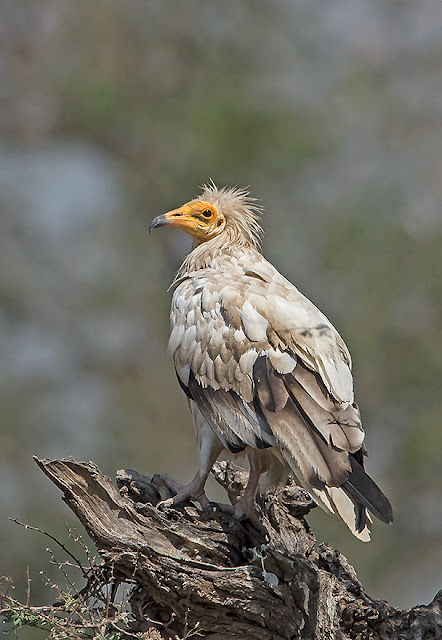 Odd-looking, pale, medium-sized vulture with a bare, solemn-looking yellow face. The bill is narrow with a black tip. In flight, the deep-fingered black flight feathers contrasting with white inner feathers may recall White Stork, but the tail is wedge shaped. Juveniles are dirty brown with bare gray faces. An inhabitant of open or semiopen areas, nesting on cliffs and less frequently in trees. Scavenges at rubbish dumps in addition to carcasses, but sadly is in decline over much of its wide range.
Odd-looking, pale, medium-sized vulture with a bare, solemn-looking yellow face. The bill is narrow with a black tip. In flight, the deep-fingered black flight feathers contrasting with white inner feathers may recall White Stork, but the tail is wedge shaped. Juveniles are dirty brown with bare gray faces. An inhabitant of open or semiopen areas, nesting on cliffs and less frequently in trees. Scavenges at rubbish dumps in addition to carcasses, but sadly is in decline over much of its wide range.
. Cinereous Vulture
Aegypius monachus
Eurasian species.
Eurasian (common) KestrelFalco tinnunculus
Spiny Babbler
Turdoides nipalensis
Day 8 Fly to Kathmandu
After breakfast, Check-out from your hotel and visit Dobhilla and Sanitary Landfill Site to look for raptors. Lunch and catch Pokhara - Kathmandu flight in the afternoon. Overnight stay at Hotel.
. บินไปกาฐมาณฑุ
หลังอาหารเช้า เช็คเอาท์จากโรงแรมของคุณและเยี่ยมชม Dobhilla และสถานที่ฝังกลบสุขาภิบาลเพื่อมองหาแร็พเตอร์ รับประทานอาหารกลางวัน และขึ้นเที่ยวบินโปขระ - กาฐมา ณ ฑุ ช่วงบ่าย พักค้างคืนที่โรงแรม
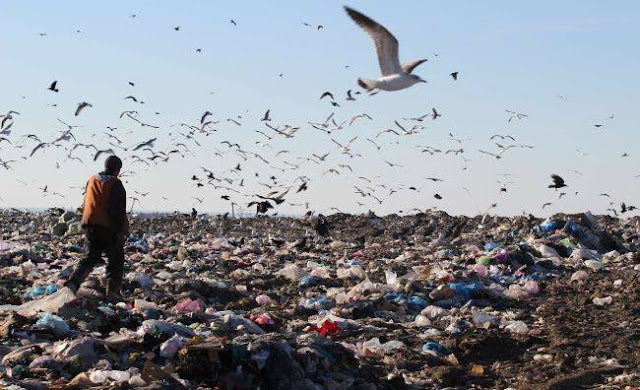 |
| แค่ภาพจินตนาการว่าน่าจะประมาณนี้ |
Dobhilla and Sanitary Landfilled Site
Dobhilla is around 4 km to the west of Phewa Lake. It is easily accessible by local transportation. These are good roosting sites for vulture species and nesting of White-rumped, Slender-billed and Egyptian vultures. The endemic bird of Nepal Spiny babbler is frequently sighted around the site. Phurse Khole flows along with this site, which provides good habitat for water birds. The confluence of Phurse Khola to Seti River gives the best habitat for elusive Himalayan wader Ibisbill.
Birdwatching Hotspots in Pokhara Valley
 |
| Spiny babbler |
 |
| Common stonechat |
On the opposite side of Dobhilla, there is Sanitary Landfilled Site of Pokhara city where garbage and solid waste are dumped and disposed of. The dumping site has many scavenger bird species. Seen vulture species are commonly sighted in dumping grounds. A large number of Egyptian vultures can be seen roosting on trees and caves near landfills. Other birds like Black Kite, Eurasian Sparrow hawk, Steppe Eagle, Common Kestrel, Paddyfield Pipit, Common Stonechat, Long-tailed Shrike, etc. are also commonly sighted bird species.
 |
| Paddyfield Pipit, |
Fire-tailed SunbirdAethopyga ignicauda
Breeding male’s long bright red tail is unmistakable. Female is yellow-green with a grayish head and a rufous tinge to the tail. Immature and non-breeding males are similar to the female, but with a varying amount of bright red on the rump and tail. Breeds in high-altitude forests and scrub up to the treeline, favoring oak and coniferous forest with a rhododendron understory; winters down to around 600 meters, often in forest edge. Gives high thin buzzy calls and twitters.
Steppe EagleAquila nipalensis
Day 9 Back to Bangkok
Morning visit to Kathmandu durbar square and market then back to Bangkok by Thai Airway.
กลับกรุงเทพฯ
เช้าเยี่ยมชมจัตุรัสกาฐมาณฑุและตลาด จากนั้นเดินทางกลับกรุงเทพฯ โดยการบินไทย
. Kathmandu Durbar Square ( "UNESCO World Heritage Site") also known as Hanuman Dhoka square is one of the major attractions in Kathmandu Valley. Most of the cultural centers of Nepal are concentrated around the Kathmandu valley; among those cultural sites, the important one is the Hanuman-dhoka Durbar Square. The name Hanuman-dhoka Durbar came from the statue of Hanuman established by the King Pratap Malla at the entrance of the royal palace in 1672 A.D. storeyed residence built by King Prithvi Narayan shah in 1770,is called Basantapur Durbar(palace). The whole complex is also known as Kathmandu Durbar Square. Located at the heart of ancient city in Kathmandu it is srounding both Hindu and Buddhist temple. Most of them are built in the pagoda style embellished with intricately carved exteriors as well as Most of the buildings we see here date from 15th to 18th century . The Durbar Square, with its old temples, palaces, epitomizes the religious and cultural life of the people. The major Interesting things to see here are "Kumari (The Living Goddess) Gar" "Kastha Mandap"Maru Ganesh, Mahadev Temple, Shiva Parvati Temple, Bhagwati Temple, Old palace, Saraswoti temple, Krishna Octangular Temple, Big drums, Kal Bhairav, Jagannath Temple, and Taleju Temple etc..
The Durbar Square are is actually made up of two sub-areas. The outer complex is renowned for numerous interesting temples as Kumari Ghar , Kasthamandap , Shiv-Parbati Temple, Jagannath Temple, Big Bell etc ,while the inner complex comprises the old palace area ,Hanuman-dhoka and its
courtyards as Nasal Choke ,Mul Choke ,Sundari Choke, Basantapur Durbar and other. Besides the magnificent temples and shrines, it has other interesting aspects are various festivals , cultural activities and traditions people are following from centuries, which are presented in the Durbar Square. The major festivals include Indrajatra, Dashain, Gaaijatra, Machchhindra-nath jatra ets. These are the occasion when the people from all over the city gather here to mark their centuries old traditions. All the carving and architecture in this area are exceptionally fine which make the architecture in this Hanuman-dhoka Durbar square among the most important sights for travelers to see.
จัตุรัสกาฐมาณฑุดูร์บาร์ ("แหล่งมรดกโลกขององค์การยูเนสโก") หรือที่รู้จักกันในชื่อจัตุรัสหนุมานโลกาเป็นหนึ่งในสถานที่ท่องเที่ยวสำคัญในหุบเขากาฐมาณฑุ ศูนย์วัฒนธรรมส่วนใหญ่ของประเทศเนปาลกระจุกตัวอยู่รอบหุบเขากาฐมาณฑุ ในบรรดาสถานที่ทางวัฒนธรรมเหล่านั้น สิ่งสำคัญคือจัตุรัสดูร์บาร์หนุมาน-โดกา ชื่อ Hanuman-dhoka Durbar มาจากรูปปั้นของหนุมานที่กษัตริย์ Pratap Malla สร้างขึ้นที่ทางเข้าพระราชวังในปี ค.ศ. 1672 ที่ประทับชั้นๆ ที่สร้างโดยกษัตริย์ Prithvi Narayan Shah ในปี ค.ศ. 1770 เรียกว่า Basantapur Durbar (พระราชวัง) บริเวณทั้งหมดนี้มีชื่อเรียกอีกอย่างว่าจัตุรัสกาฐมา ณ ฑุดูร์บาร์ ตั้งอยู่ใจกลางเมืองโบราณในกาฐมา ณ ฑุ มีทั้งวัดฮินดูและพุทธ ส่วนใหญ่สร้างขึ้นในรูปแบบเจดีย์ที่ประดับประดาด้วยภายนอกที่แกะสลักอย่างประณีต เช่นเดียวกับอาคารส่วนใหญ่ที่เราเห็นที่นี่มีอายุตั้งแต่ศตวรรษที่ 15 ถึงศตวรรษที่ 18 จัตุรัส Durbar ซึ่งมีวัดและพระราชวังเก่าแก่ เป็นตัวอย่างที่ชัดเจนของชีวิตทางศาสนาและวัฒนธรรมของผู้คน สิ่งที่น่าสนใจที่สำคัญที่ต้องดูที่นี่คือ "กุมารี (เทพธิดาที่มีชีวิต) Gar" "Kastha Mandap" Maru Ganesh, วัด Mahadev, วัดพระศิวะปาราวตี, วัด Bhagwati, พระราชวังเก่า, วัด Saraswoti, วัดกฤษณะแปดเหลี่ยม, กลองใหญ่, Kal Bhairav, วัด Jagannath และวัด Taleju ฯลฯ
จริงๆ แล้วจัตุรัส Durbar นั้นประกอบด้วยสองส่วนย่อย อาคารด้านนอกมีชื่อเสียงในด้านวัดที่น่าสนใจมากมาย เช่น Kumari Ghar, Kasthamandap, วัด Shiv-Parbati, วัด Jagannath, Big Bell ฯลฯ ในขณะที่อาคารด้านในประกอบด้วยบริเวณพระราชวังเก่า หนุมาน-โดกา และ
สนามหญ้าเช่น Nasal Choke, Mul Choke, Sundari Choke, Basantapur Durbar และอื่น ๆ นอกจากวัดและศาลเจ้าอันงดงามแล้ว ยังมีแง่มุมที่น่าสนใจอื่นๆ อีกด้วย เช่น เทศกาลต่างๆ กิจกรรมทางวัฒนธรรม และประเพณีที่ผู้คนติดตามมานานหลายศตวรรษ ซึ่งจัดแสดงในจัตุรัส Durbar เทศกาลสำคัญ ได้แก่ อินดราชาตรา, ดาเชน, ไกจะตรา, มัชชินดรา-นาถ จาตรา เอตส์ นี่เป็นโอกาสที่ผู้คนจากทั่วเมืองมารวมตัวกันที่นี่เพื่อรำลึกถึงประเพณีเก่าแก่หลายศตวรรษของพวกเขา การแกะสลักและสถาปัตยกรรมทั้งหมดในบริเวณนี้มีความวิจิตรงดงามเป็นพิเศษ ซึ่งทำให้สถาปัตยกรรมในจัตุรัสหนุมาน-โดกา ดูร์บาร์แห่งนี้เป็นหนึ่งในสถานที่ท่องเที่ยวที่สำคัญที่สุดที่นักเดินทางจะได้ชมAcommodation
US$ 1,150 per person based on 8-10 persons.
.
Price includes:
• 2 nights at Hotel nearby Chitawon National Park complete package includes: lodging on twin sharing basis, all meal, jungle activities, elephant ride option jungle drive, canoeing (during summer it is not possible), Bird watching, nature walk, Tharu stick dance, national park entrance fee, nature conservation fee
• Kathmandu / Chitawon / Pokhara by private Transportation
• One way Pokhara - Kathmandu flight
• 3 nights at Australian camp Lodge with full board meal
• 2 nights hotel in Kathmandu with breakfast basis
• 1 night hotel in Pokhara with breakfast basis
• Lunch and dinner while stay in Pokhara and Kathmandu
. Drinking water
. Nepal's porters from Lumle to Australian camp Lodge.
Price excludes:
• Air ticket from Bangkok – Kathmandu and Kathmandu – Bangkok
. Nepal's Visa Application
. Beverage drinks
• Medical and personal insurances,
• Entrance fee of monuments



